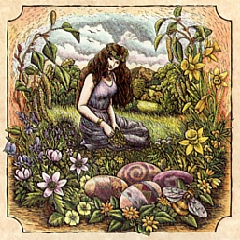Religious traditions across the globe prove that what is old is new again,Spiritual practices, traditions and symbology of the  Northern hemisphere reflect broad themes of rebirth and renewal reinvented from the ancient Spring festivals to modern Christian practices borrowing heavily from the same myths, traditions and symbology.
Northern hemisphere reflect broad themes of rebirth and renewal reinvented from the ancient Spring festivals to modern Christian practices borrowing heavily from the same myths, traditions and symbology.
 Northern hemisphere reflect broad themes of rebirth and renewal reinvented from the ancient Spring festivals to modern Christian practices borrowing heavily from the same myths, traditions and symbology.
Northern hemisphere reflect broad themes of rebirth and renewal reinvented from the ancient Spring festivals to modern Christian practices borrowing heavily from the same myths, traditions and symbology.
Gilbert Murray in Five Stages of Greek Religion writes about the passion behind the Greek celebration of Easter:
Anyone who has been in Greece at Easter time, especially among the more remote peasants, must have been struck by the emotion of suspense and excitement, with which they wait for the announcement, “Christos aneste,” “Christ is risen!” and the response “Alethos aneste,” “He has really risen!” [An old peasant woman] explained her anxiety: “If Christ does not rise tomorrow we shall have no harvest this year.” We are evidently in the presence of an emotion and a fear which, beneath its Christian colouring and, so to speak, transfiguration, is in its essence — a relic from a very remote pre-Christian past.
The common themes of rebirth and resurrection countlessly reinvented for new generations.
In ancient Rome, the 10-day rite in honor of Attis, son of the great goddess Cybele, began on March 15th. A pine tree, which represented Attis, was chopped down, wrapped in a linen shroud, decorated with violets and placed in a sepulchre in the temple. On the Day of Blood or Black Friday, the priests of the cult gashed themselves with knives as they danced ecstatically, sympathizing with Cybele in her grief and helping to restore Attis to life. Two days later, a priest opened the sepulchre at dawn, revealing that it was empty and announcing that the god was saved. This day was known as Hilaria or the Day of Joy, a time of feasting and merriment.
In Contrast the Christian Good Friday rite focuses on Christ as a crucified and willing sacrifice. Altars are stripped, candles extinguished to represent the darkness of the grave. But on Easter, light springs from the darkness, Christ rises from the tomb. If you’ve never attended an Easter vigil, I highly recommend it. (I usually go to a Russian or Greek Orthodox church, so I don’t know what the ceremony is like in other Christian churches.) Shortly before midnight all the lights are extinguished and the thronged church is dark and silent. Everyone is holding an unlit candle. The priest lights the Paschal candle, which has been ritually blessed and inscribed with the year. He then lights the candles of those nearby, who light the candles of their neighbors, until the church is ablaze with light and filled with song.
No comments:
Post a Comment